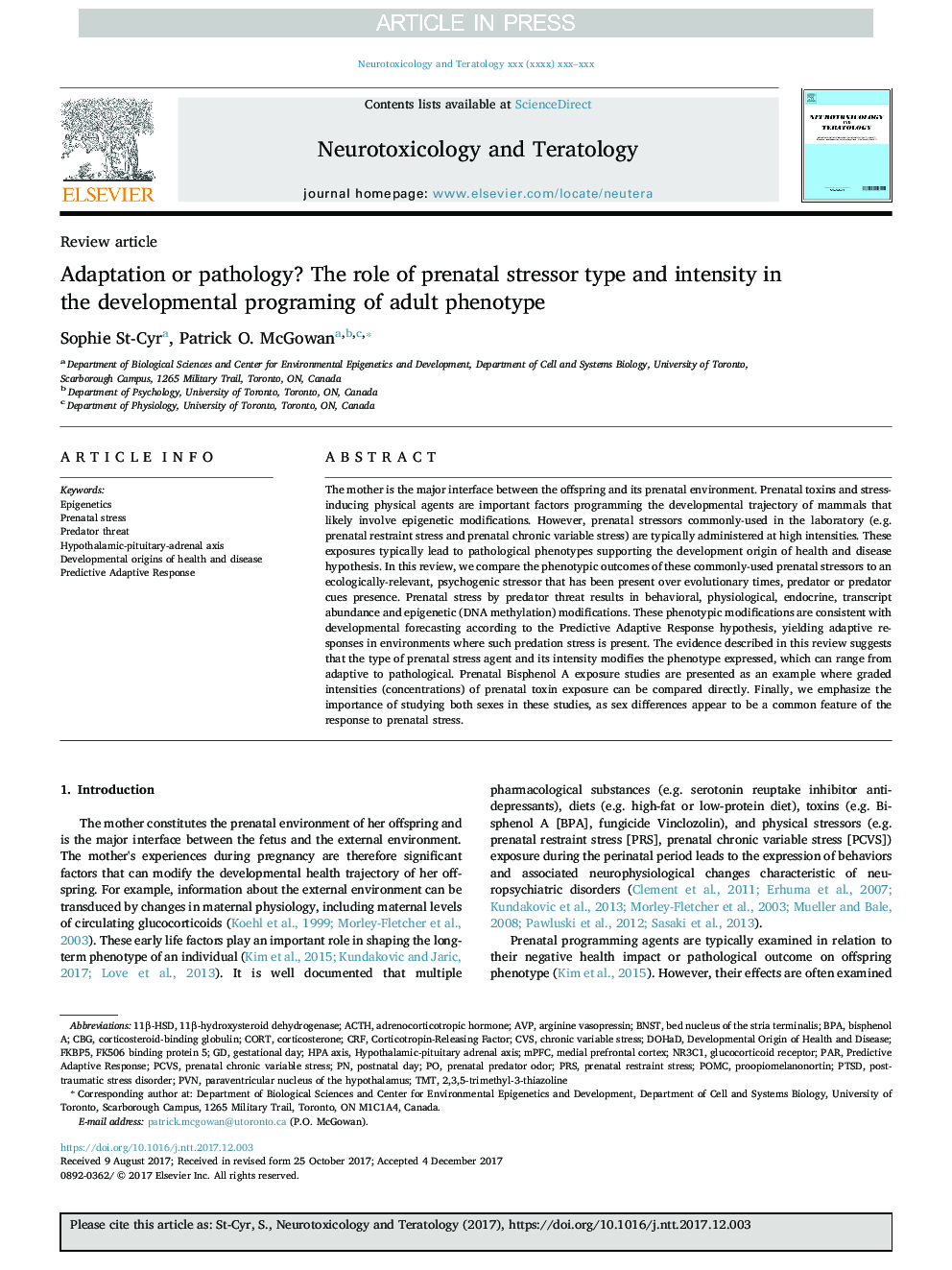| Article ID | Journal | Published Year | Pages | File Type |
|---|---|---|---|---|
| 8550658 | Neurotoxicology and Teratology | 2018 | 12 Pages |
Abstract
The mother is the major interface between the offspring and its prenatal environment. Prenatal toxins and stress-inducing physical agents are important factors programming the developmental trajectory of mammals that likely involve epigenetic modifications. However, prenatal stressors commonly-used in the laboratory (e.g. prenatal restraint stress and prenatal chronic variable stress) are typically administered at high intensities. These exposures typically lead to pathological phenotypes supporting the development origin of health and disease hypothesis. In this review, we compare the phenotypic outcomes of these commonly-used prenatal stressors to an ecologically-relevant, psychogenic stressor that has been present over evolutionary times, predator or predator cues presence. Prenatal stress by predator threat results in behavioral, physiological, endocrine, transcript abundance and epigenetic (DNA methylation) modifications. These phenotypic modifications are consistent with developmental forecasting according to the Predictive Adaptive Response hypothesis, yielding adaptive responses in environments where such predation stress is present. The evidence described in this review suggests that the type of prenatal stress agent and its intensity modifies the phenotype expressed, which can range from adaptive to pathological. Prenatal Bisphenol A exposure studies are presented as an example where graded intensities (concentrations) of prenatal toxin exposure can be compared directly. Finally, we emphasize the importance of studying both sexes in these studies, as sex differences appear to be a common feature of the response to prenatal stress.
Keywords
Predictive adaptive responseBPACBGAVPBNSTFKBP5NR3C1DOHaDMPFC11β-HSDDevelopmental origin of health and diseaseFK506 binding protein 5CRFPOMC11β-hydroxysteroid dehydrogenaseTMTCVSPRSACTHpost-traumatic stress disorderPTSDPrenatal stressPrenatal restraint stressChronic variable stressEpigeneticsBisphenol APargestational daypostnatal dayDevelopmental origins of health and diseasecorticotropin-releasing factormedial prefrontal cortexPVNhypothalamic-pituitary adrenal axisHypothalamic-pituitary-adrenal axisHPA axisbed nucleus of the stria terminalisparaventricular nucleus of the hypothalamusadrenocorticotropic hormonearginine vasopressinCORTCorticosteroneCorticosteroid-binding globulinglucocorticoid receptor
Related Topics
Life Sciences
Environmental Science
Health, Toxicology and Mutagenesis
Authors
Sophie St-Cyr, Patrick O. McGowan,
